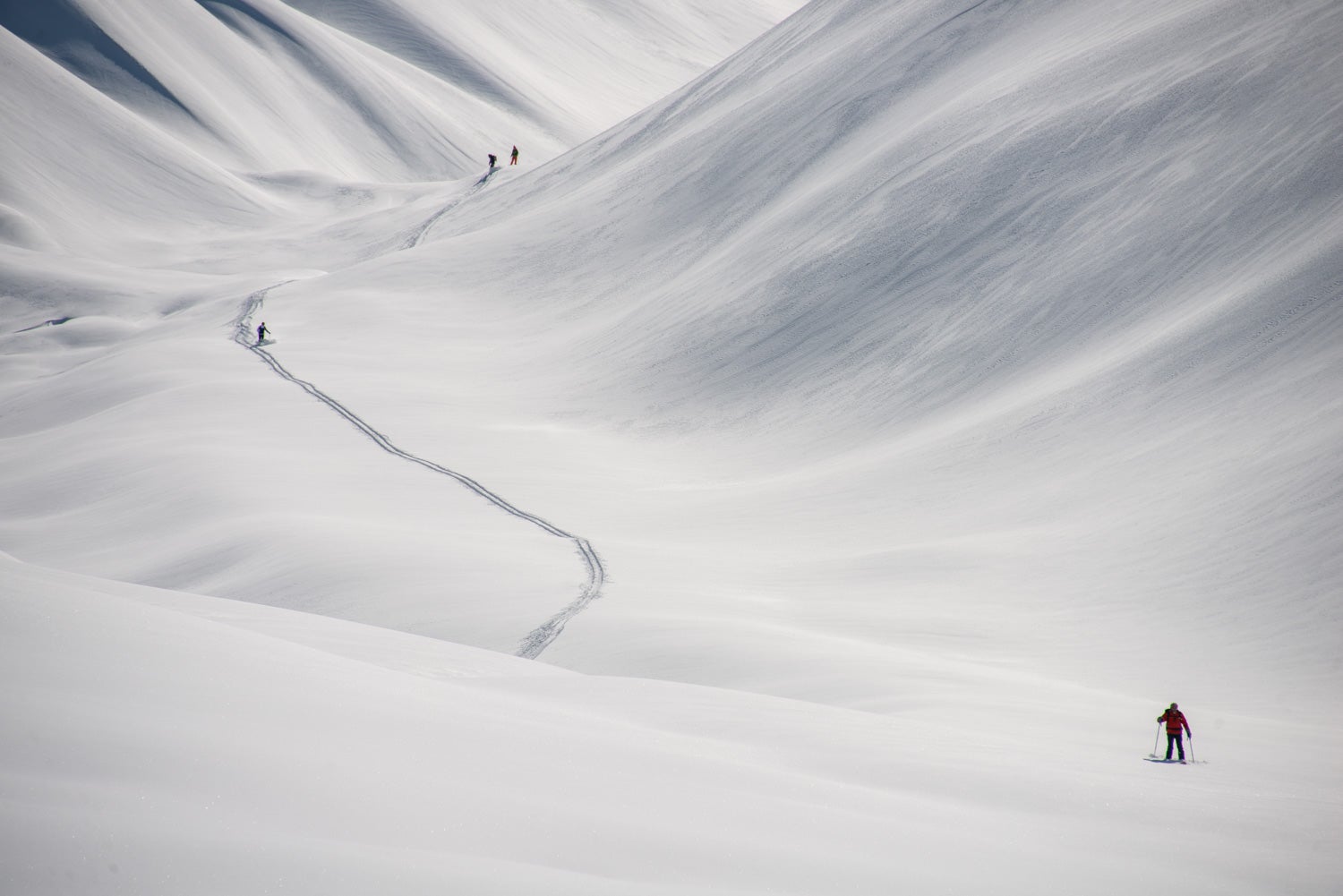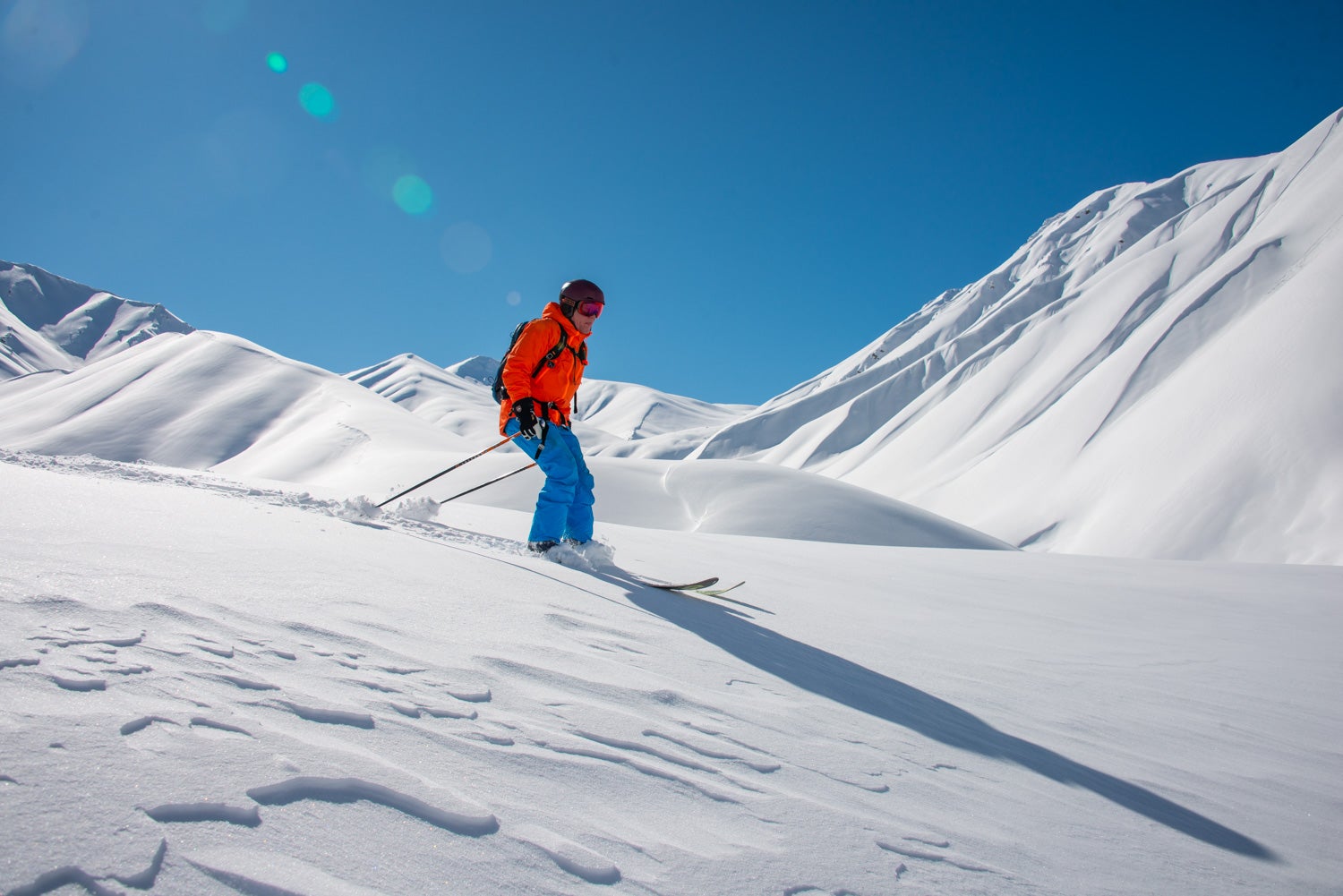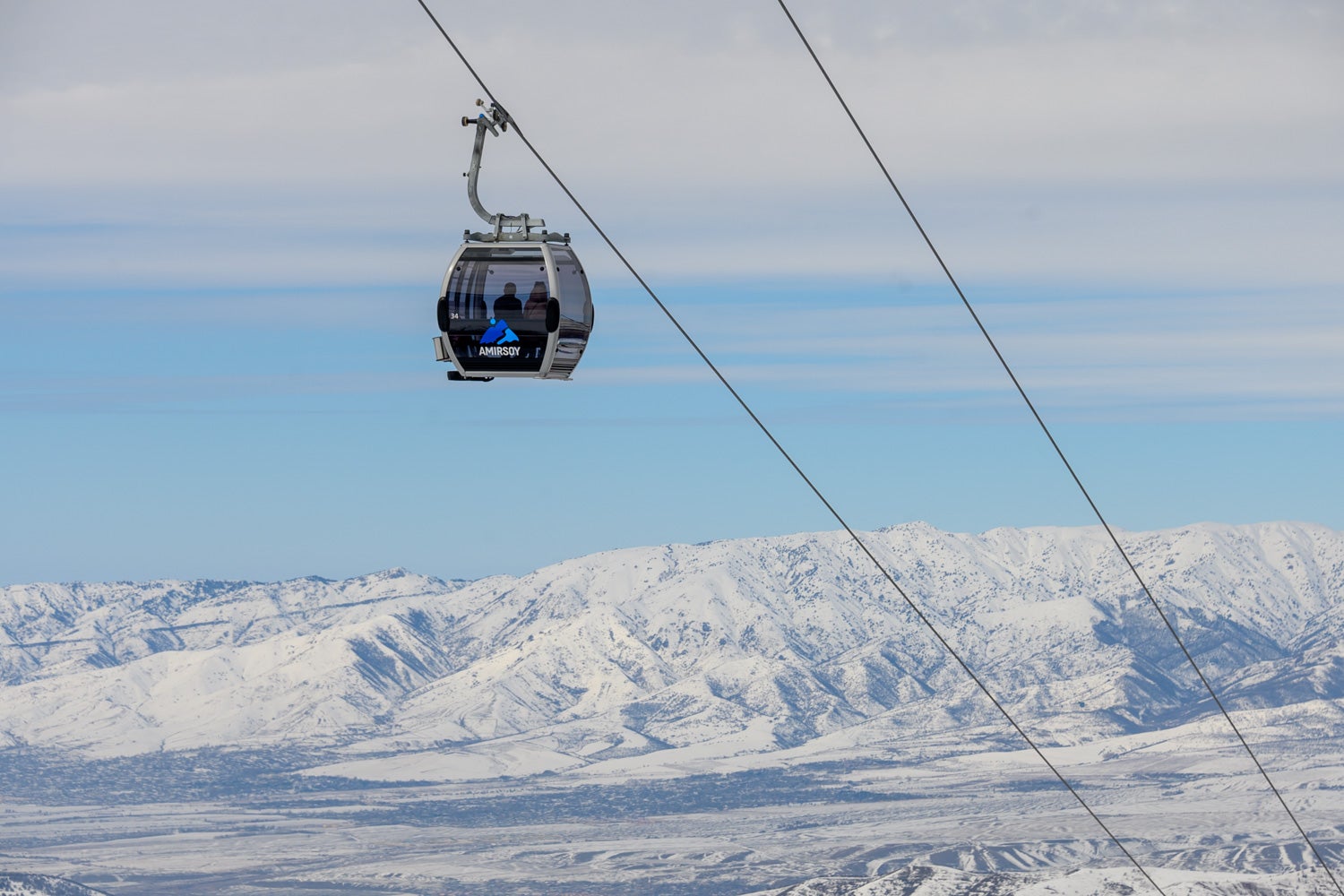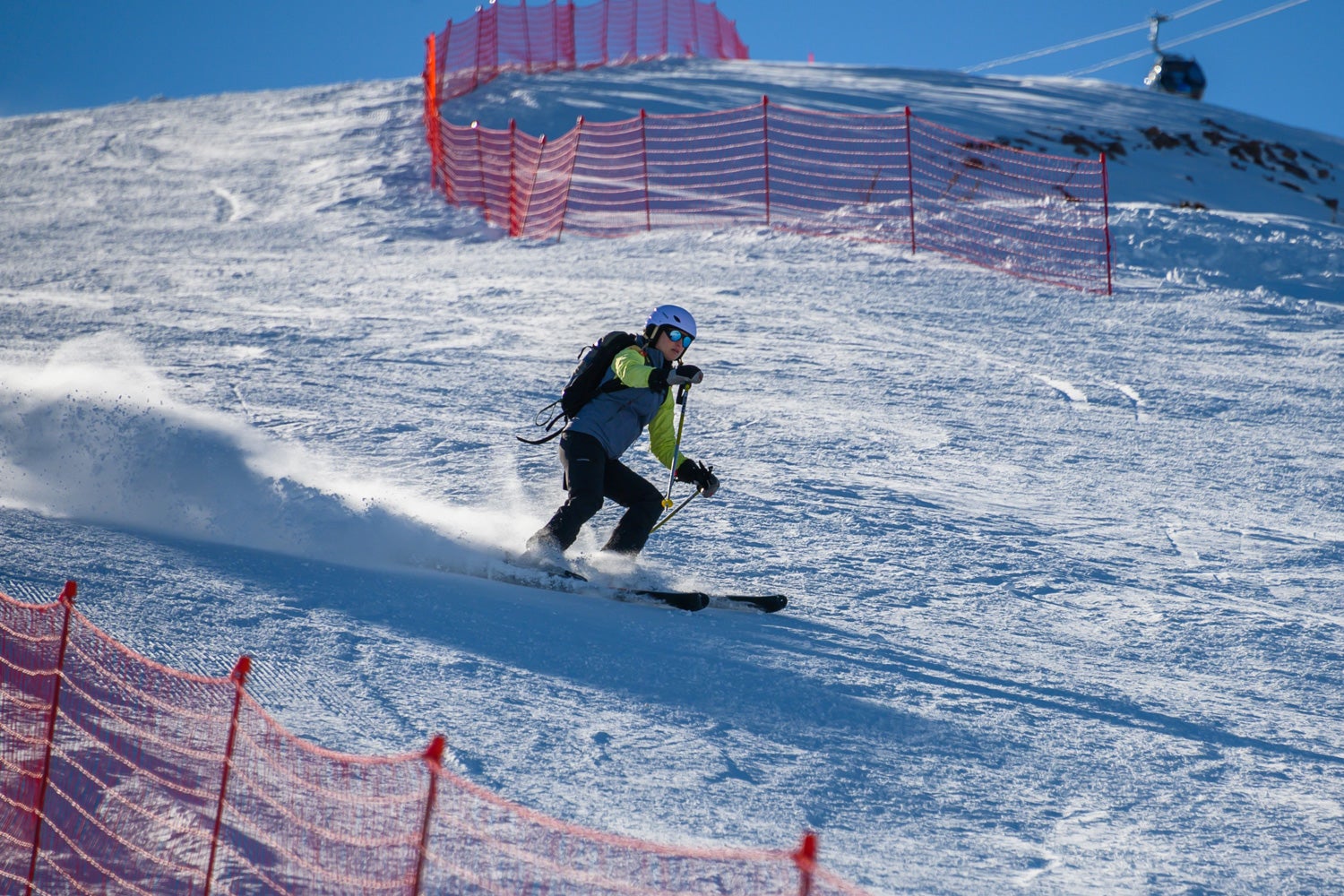Why Uzbekistan is the most thrilling ski destination you’ve never considered
Untouched slopes accessed by helicopter and metres of light, dry powder: this secret snowsports paradise won’t stay undiscovered for long, says Sophie Ibbotson

“Uzbekistan has the best snow of anywhere in the world.”
I’m sitting in a pop-up igloo two hours drive from Tashkent when the untanned Dane in front of me drops this outrageous claim. Had anyone else uttered such words I’d have dismissed it as hyperbole, but Thomas Thor-Jensen knows his stuff. A ski industry veteran, he spent 30 years working in the French Alps, including 12 years as the director of operations for Courchevel.
Thomas arrived in Uzbekistan 18 months before the pandemic with the unprecedented challenge of building a world-class ski resort from scratch. With one maverick investor, a team of 20 expats, and now upwards of 300 local staff, he defied every expectation and actually pulled it off. Amirsoy Mountain Resort opened its doors on 21 December, 2019.

If you didn’t realise that you can ski in Uzbekistan, you are not alone. It is only in the past few years that the country has become visa-free and opened up for tourism, and the main focus has been on promoting the Unesco World Heritage cities of Samarkand, Bukhara, and Khiva.
But the mountains were here long before the Silk Road was even conceived, and small, Soviet-era resorts were built at Chimgan and Beldersay in the Western Tian Shan. An elite cadre of thrill seekers led by 68-year-old Gregori Trebisovski – the first heli-ski guide in Uzbekistan and a pioneer of free riding in the country – mapped the peaks and ravines, but in a hard-to-reach country with plenty of red tape, Uzbekistan’s potential as a ski destination passed most winter sports enthusiasts by.
The opening of Amirsoy changed everything. In the 2019-20 season – prior to coronavirus putting paid to nearly all tourism worldwide – Gregori and his team hosted three times more heli-skiers than they did the previous year, including the first group of Brits in his 20-plus years in the business. At the time of my visit, the helicopter was a whale-like Mi8 owned by Uzbekistan Airways, but the national airline had already committed to purchasing five new helicopters from Airbus in time for the following season.
If you didn’t realise that you can ski in Uzbekistan, you are not alone
We took off from the helipad at Beldersoy, flying over (and sometimes between) the snow-coated peaks with a brilliant blue backdrop of sky. The Mi8 easily sits 16 people, so there’s plenty of space for non-skiing passengers to come along for the ride. Gregori picks drop off points based on the weather, snow conditions, and the ability of his skiers. On our excursion he chose Ikhnach, at about 3,800m above sea level, and a route with a 1,300m descent to a frozen lake barely identifiable beneath the metres of powdery snow.
It’s the quality of this snow that is Uzbekistan’s unique selling point. It’s very light and dry, and remains so even if it’s a warm day. Normally you only get that at high altitude. Tristan Kennedy, editor of Snow Magazine, explains: “It’s the same legendary powder you get all over the Tian Shan [high-altitude mountains that are part of the Himalayas], but Amirsoy has the best lift access anywhere in central Asia.”

The resorts in Uzbekistan are relatively low. Even Big Chimgan, the highest summit in the area, is only 3,309m – some 1,500m lower than Mont Blanc. Surely, Amirsoy is vulnerable to climate change? “There’s no place in the world which won’t have a problem with climate change,” notes Thomas. “But at night it is very cold, -12C, so we have no problem producing snow with cannons.”
It’s the same legendary powder you get all over the Tian Shan, but Amirsoy has the best lift access anywhere in central Asia
Consideration of the environment is at the forefront of Amirsoy’s development plan, and the best practices established here will also be implemented at Beldersay and Chimgan when they are redeveloped over the coming years. Amirsoy’s managers, Andorra-based PGI, have learnt lessons from the Alps and Pyrenees about how to protect the mountains. They installed solar panels to provide Amirsoy’s electricity, and a self-contained water system for black water treatment. Recycling is high on the agenda, too, even though it means building local capacity to collect and process the resort’s waste.
In 2019-20, the first phase of Amirsoy was operational; the investor committed to spend a further $80-90m in 2020-21, with plans to open up the neighbouring valley with a Telemix lift and another 9km of pisted runs. The luxury accommodation – Le Chalet by Amirsoy – has since gained a spa, while restaurants and bars have moved out of their temporary igloos into the purpose-built ski centre. Despite the pandemic throwing things off kilter, the facilities are finally a match for the snow, cementing Uzbekistan’s billing as one of the most exciting winter sports destinations in the world.

Travel essentials
Getting there
Trying to fly less?
You can travel from London to Tashkent by train in five or so days. Catch a train from London to Moscow via Paris, taking the Paris-Moscow Express sleeper service, in around 48 hours. From there, a Moscow to Tashkent train runs thrice-weekly, taking just under three days.
Fine with flying?
Uzbekistan Airways flies from London to Tashkent from £430 return.
More information
Adult ski passes at Amirsoy cost £17.50 per day.
A one week ski touring package in Uzbekistan starts from £700 with Asia Adventures, which also offers heli-skiing packages from £350 for four drops.
Join our commenting forum
Join thought-provoking conversations, follow other Independent readers and see their replies
Comments
Bookmark popover
Removed from bookmarks